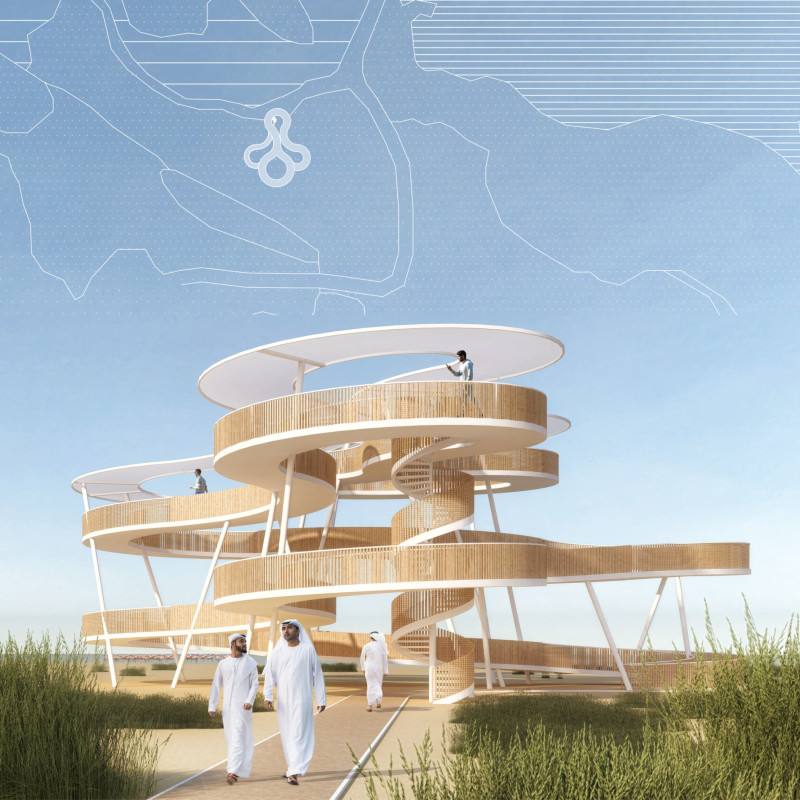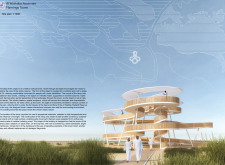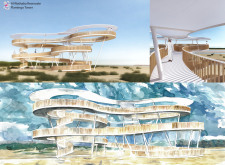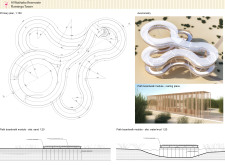5 key facts about this project
The primary function of the Flamingo Tower is to serve as a viewpoint, facilitating wildlife observation and enhancing users' understanding of the ecosystem. The ramp structure, which slopes gently at a grade of 5%, accommodates individuals with mobility challenges, ensuring inclusivity in outdoor environments. This consideration aligns with contemporary architectural goals of providing equal access to natural spaces.
The design integrates various materials that complement the local environment while ensuring durability and stability. Composite wood boards create the main walking surfaces, providing a non-slip texture suitable for outdoor conditions. Steel profiles are used in the tower's framework, contributing to its structural integrity without overshadowing the lightweight appearance of the design. A semi-permeable membrane covers the upper sections of the tower, allowing natural light to filter through while providing shaded areas for visitors. Open barriers incorporated into the design maximize visibility toward the wetlands, creating unobstructed views that foster a deeper appreciation of nature.
One of the distinct aspects of the Flamingo Tower is its careful consideration of the local ecosystem. The surrounding landscaping incorporates native vegetation, reinforcing the relationship between the architecture and the natural surroundings. This choice not only supports biodiversity but also promotes sustainability, as native plants require less water and maintenance.
Another unique design approach is the spiral ramp that guides visitors through the structure. This winding pathway not only facilitates movement but also enhances the experience by creating various vantage points from which to observe the wildlife and landscape. By promoting a slow progression upward, the design encourages visitors to engage with their environment at a different pace, enhancing the educational aspect of the structure.
Overall, the Flamingo Tower encapsulates a balance between architecture and nature, reflecting a commitment to inclusion and environmental stewardship. Its design highlights how observation structures can serve dual functions as both recreational facilities and educational platforms.
For a comprehensive understanding of the Flamingo Tower, readers are encouraged to explore its architectural plans, sections, and additional design details, which provide deeper insights into the project’s conception and realization.


























